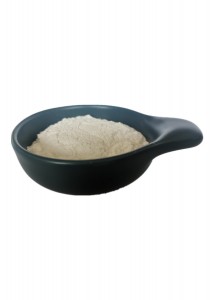Diatomite filter aid has good microporous structure, adsorption performance and anti-compression performance, which not only enables the filtered liquid to obtain a better flow rate ratio, but also filters out fine suspended solids to ensure clarity. Diatomaceous earth is the deposit of the remains of ancient single-celled diatoms. Its characteristics: light weight, porous, high strength, wear resistance, insulation, heat insulation, adsorption and filling and other excellent performance. Today, Junlian diatomite will popularize sev eral different filtration methods of diatomite filter aid.
eral different filtration methods of diatomite filter aid.
The diatomite filter aid mainly traps the solid impurity particles suspended in the liquid on the surface of the medium and the channel through the three functions of screening, depth effect, and adsorption, so as to achieve the purpose of solid-liquid separation.
1. Diatomite screening effect: This is a surface filtering effect. When the fluid flows through the diatomaceous earth, the pores of the diatomaceous earth are smaller than the particle size of the impurity particles, so that the impurity particles cannot pass through and are intercepted. The effect is called the screening effect.
 2. Diatomite depth effect: The depth effect is the retention effect of deep filtration. In deep filtration, the separation process only occurs in the “inside” of the medium. Part of the relatively small impurity particles that penetrate the surface of the filter cake are covered by diatomite. The internal tortuous microporous structure and the finer pores inside the filter cake are blocked. Such particles are often smaller than the micropores of diatomaceous earth. When the particles hit the wall of the channel, they may leave the liquid flow. However, whether it can achieve this depends on the balance of inertial force and resistance on the particles. This interception and screening are similar in nature, and both belong to mechanical effects. The ability to filter out solid particles is basically only related to the relative size and shape of the solid particles and pores.
2. Diatomite depth effect: The depth effect is the retention effect of deep filtration. In deep filtration, the separation process only occurs in the “inside” of the medium. Part of the relatively small impurity particles that penetrate the surface of the filter cake are covered by diatomite. The internal tortuous microporous structure and the finer pores inside the filter cake are blocked. Such particles are often smaller than the micropores of diatomaceous earth. When the particles hit the wall of the channel, they may leave the liquid flow. However, whether it can achieve this depends on the balance of inertial force and resistance on the particles. This interception and screening are similar in nature, and both belong to mechanical effects. The ability to filter out solid particles is basically only related to the relative size and shape of the solid particles and pores.
3. Diatomite adsorption: The adsorption can actually be regarded as electrokinetic attraction, which mainly depends on the surface properties of the solid particles and the diatomite itself. The point position of diatomaceous earth is negative, the absolute value is large, and it can effectively adsorb positive charges. When particles smaller than the internal pores of diatomaceous earth collide on the internal surface of porous diatomaceous earth, they are attracted by electric charges. There is also a kind of mutual attraction between particles to form clusters and adhere to the diatomaceous earth. Both belong to adsorption, and adsorption is more complicated than the previous two effects. It is generally believed that the reason why solid particles smaller than the pore diameter are trapped is mainly due to: intermolecular forces (also called van der Waals attraction), including permanent dipole, induced dipole, instant dipole and the existence of potential Ion exchange process.
Post time: Sep-06-2021

